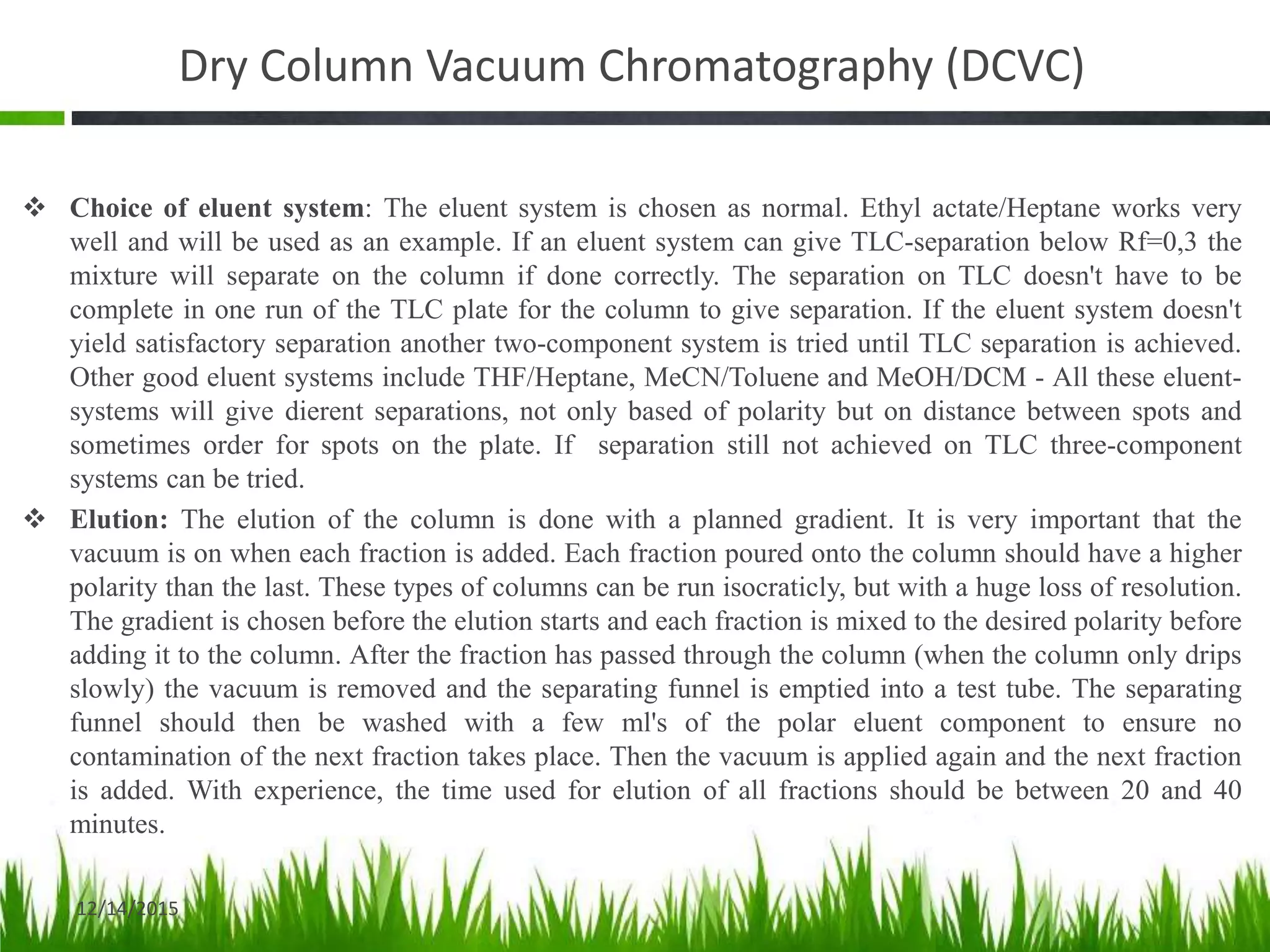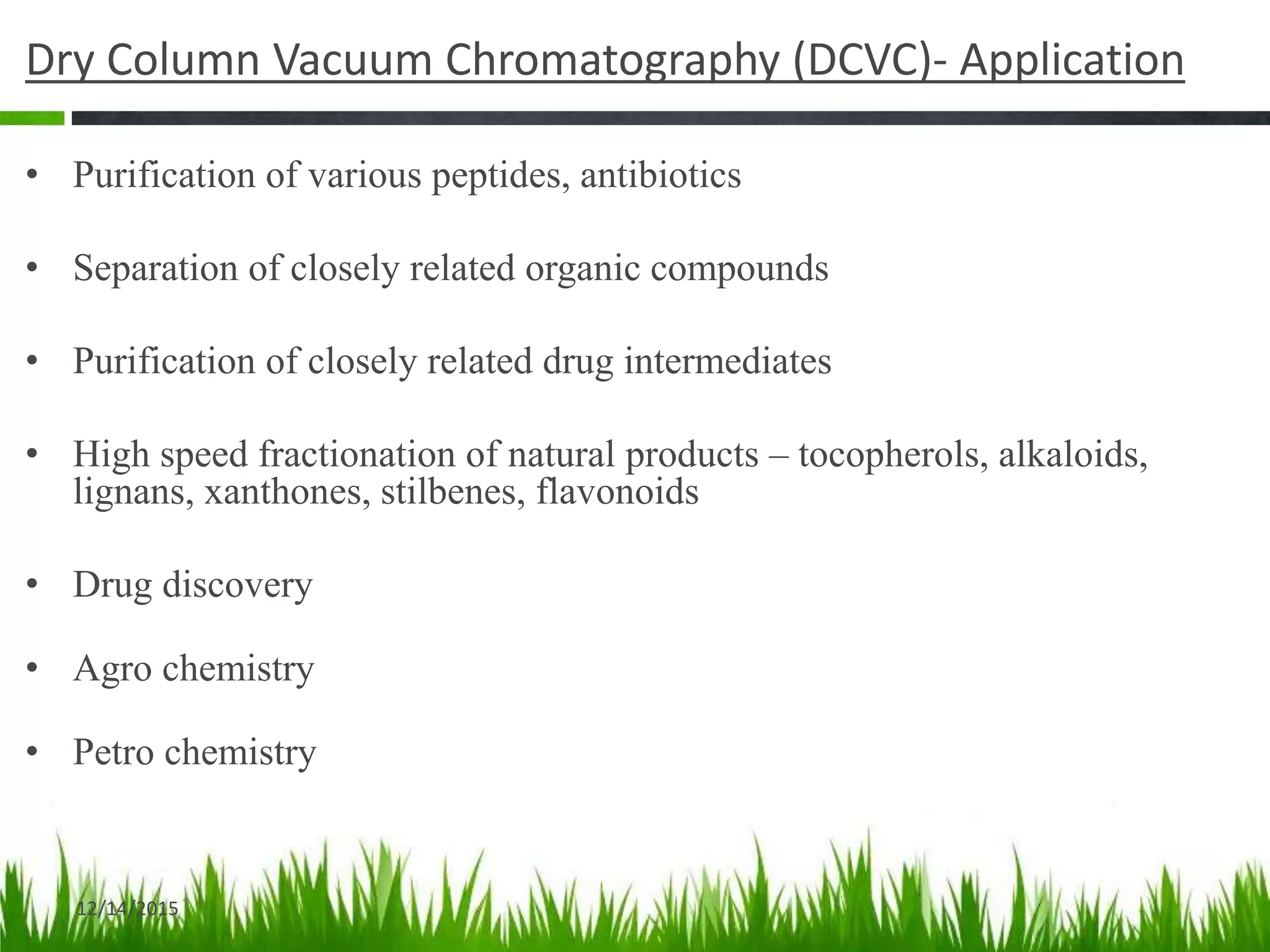The document discusses the history and principles of Dry Column Vacuum Chromatography (DCVC), an advanced method for separation, identification, and purification of compounds. It details the components, instrumentation, and procedure involved in DCVC, highlighting its advantages over traditional methods like flash chromatography. The document also outlines practical applications of DCVC in various fields including drug discovery, agrochemistry, and the purification of natural products.
![Presented by
Sagar Kishor savale
[Department of Pharmacy (pharmaceutics)]
2015-016
avengersagar16@gmail.com
Dry Column Vacuum
Chromatography (DCVC)
Sagar Kishor savale
Vacuum Chromatography](https://image.slidesharecdn.com/drycolumnvacuumchromatographydcvc-151214062030/75/Dry-column-vacuum-chromatography-dcvc-1-2048.jpg)














